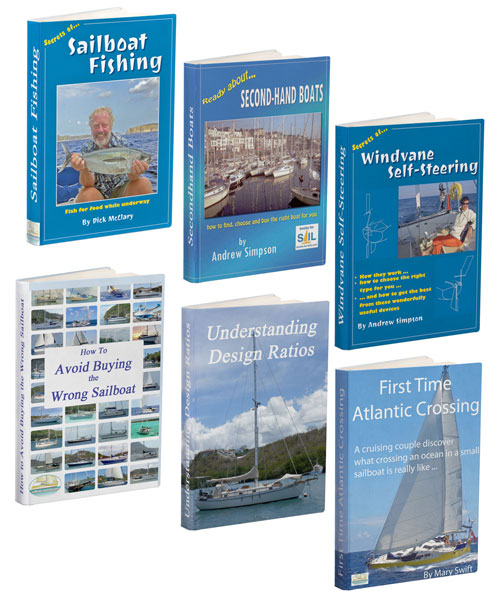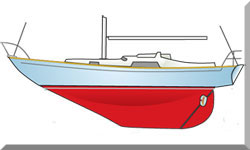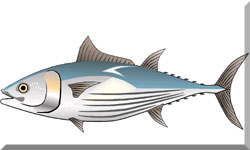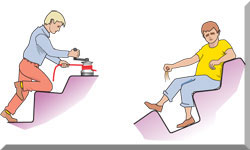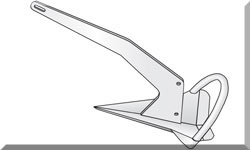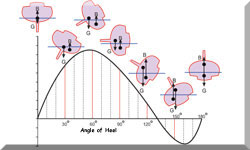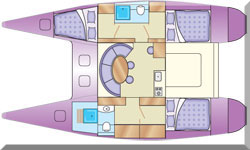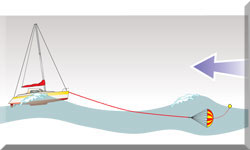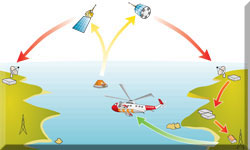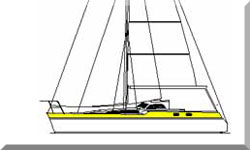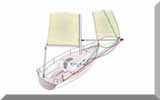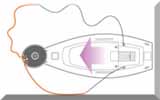- Home
- Hylas Sailboats
Hylas Yachts: Crafting Blue Water Dreams from Taiwan
For sailors with an eye for quality and a yearning for distant horizons, the name Hylas often resonates. These Taiwanese-built yachts, known for their robust construction, comfortable interiors, and dependable performance, have carved out a significant niche in the blue water cruising market.
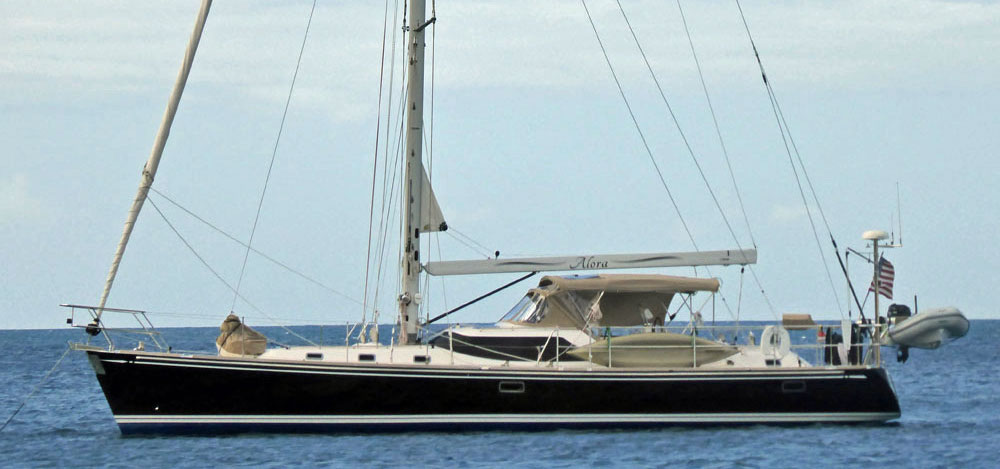 Hylas 56
Hylas 56Table of Contents
- A Legacy Born in Taiwan: Queen Long Marine's Vision
- Designed for the Deep: A Blend of Renowned Architects
- Built to Endure: Solid Construction and Meticulous Craftsmanship
- A Fleet for the Far Seas: Evolving Models and Enduring Favorites
- Performance and Seaworthiness: Built for the Open Ocean
- Interiors of Distinction: Luxury and Liveability
- Market Position and Enduring Legacy
- Navigating the Nuances: Challenges and Considerations
- Summary
A Hylas is frequently seen as a capable partner for serious offshore adventures, a reputation earned through decades of meticulous craftsmanship and an unwavering focus on long-distance cruisers' needs.
A Legacy Born in Taiwan: Queen Long Marine's Vision
The story of Hylas Yachts starts in the early 1980s. Joseph Huang, president of Queen Long Marine Ltd. in Kaohsiung, Taiwan, began collaborating with the renowned naval architects Sparkman & Stephens. Their initial project in 1981 was the Stevens 47, named after Bill Stevens of Stevens Yacht Charters, who placed substantial orders for the model. This foundational endeavor set the stage for what would become the Hylas brand. Huang officially introduced the Hylas marque in 1984, drawing inspiration from Greek mythology – Hylas, a youth associated with Hercules and the voyage of the Argonauts, a fitting namesake for yachts designed for exploration.
From its very beginning, Queen Long Marine's philosophy has centered on building high-quality, semi-custom yachts tailored for blue water cruising. Unlike mass-produced boats, Hylas has consistently offered owners a significant degree of customization, allowing for personalized interiors and equipment choices – a practice that continues today. This commitment to meeting individual needs, paired with robust construction and reliable systems, has been a driving force behind the brand's lasting reputation. Queen Long Marine remains a family-owned and operated shipyard, with the third generation now actively involved in carrying forward this impressive legacy.
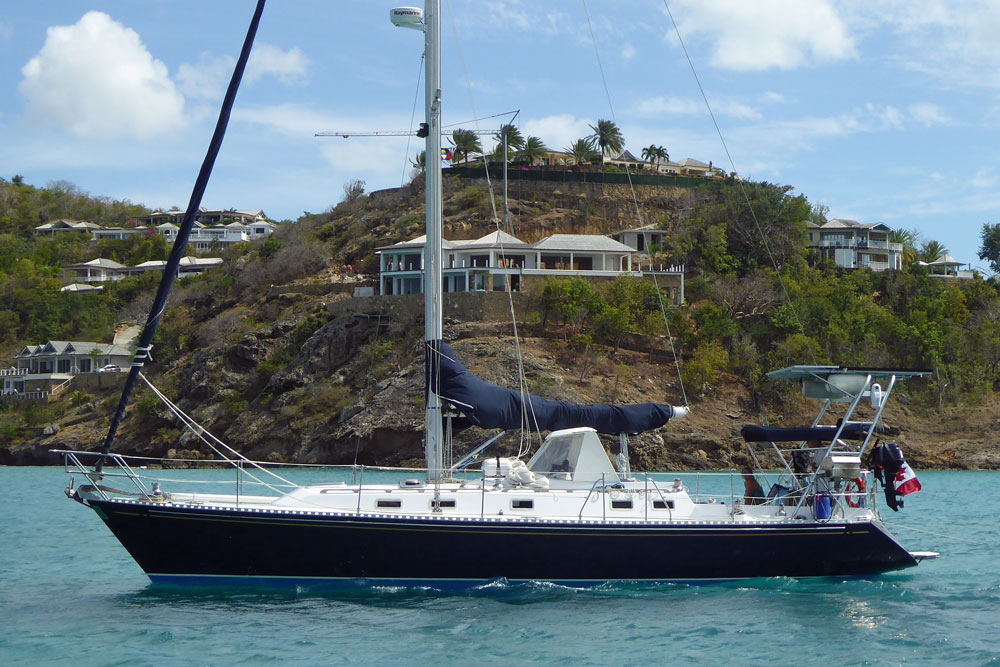 Hylas 42
Hylas 42Designed for the Deep: A Blend of Renowned Architects
Hylas yachts are distinguished by their collaborations with some of naval architecture's most respected names. While Sparkman & Stephens were instrumental in the brand's early development with models like the Stevens 47 and later the Hylas 49, most Hylas designs over the years have come from the drawing boards of Germán Frers and Bill Dixon. More recently, Dean Salthouse has contributed to their power yacht line. This approach of engaging external, world-class designers ensures a fresh perspective, blending the performance and comfort that truly define the Hylas aesthetic.
You'll often spot signature design elements like fine entries and wide beams that carry well aft, contributing to both a comfortable motion in a seaway and spacious interiors. Early models frequently featured long keels, eventually evolving into fin keels with partial skegs on many later designs – a configuration chosen for a good balance of performance and protection.
Modern Hylas designs, such as the H57 and H60, incorporate features like twin rudders for improved control, plumb bows for maximized waterline length, and broad transoms for enhanced living space and easier water access. The emphasis remains firmly on seaworthiness, ease of handling for short-handed crews, and liveability for extended periods aboard.
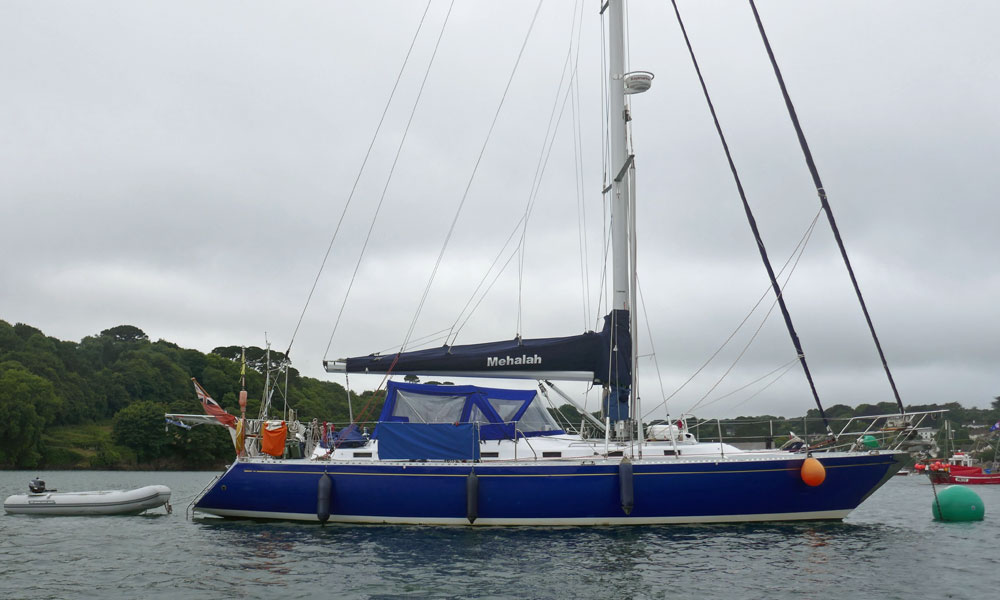 Stephens 47 (from where it all started)
Stephens 47 (from where it all started)Built to Endure: Solid Construction and Meticulous Craftsmanship
At the heart of every Hylas lies a deep commitment to robust construction methods and high-quality materials, specifically engineered to withstand the rigors of offshore sailing. Hulls are typically solid FRP (Fiberglass Reinforced Plastic), laid up with alternating layers of aramid fiber (like Twaron, known for being 2.5 times stronger than steel) and E-glass, using vinylester resin and isophthalic gel-coat.
Newer Hylas yachts, including the H57 and H60, utilize vacuum-bagged infusion processes to achieve optimal resin-to-fiber ratios, resulting in strong yet lightweight laminates. This advanced process also underpins a five-year hull-and-deck warranty against structural issues and osmosis blistering.
Decks frequently feature Baltek balsa coring in non-skid areas, with solid laminate found in high-stress points and around all through-bolts. Through-hull fittings are commonly solid bronze and bonded for superior integrity. Keels are typically solid lead, securely bolted to the hull with robust stainless-steel bolts, often reinforced with transverse-mounted backing plates.
The attention to detail extends to the electrical and mechanical systems, renowned for their quality and accessibility, with tinned copper wiring used throughout. This dedication to over-engineering and meticulous finishing forms a cornerstone of the Hylas reputation for durability and longevity.
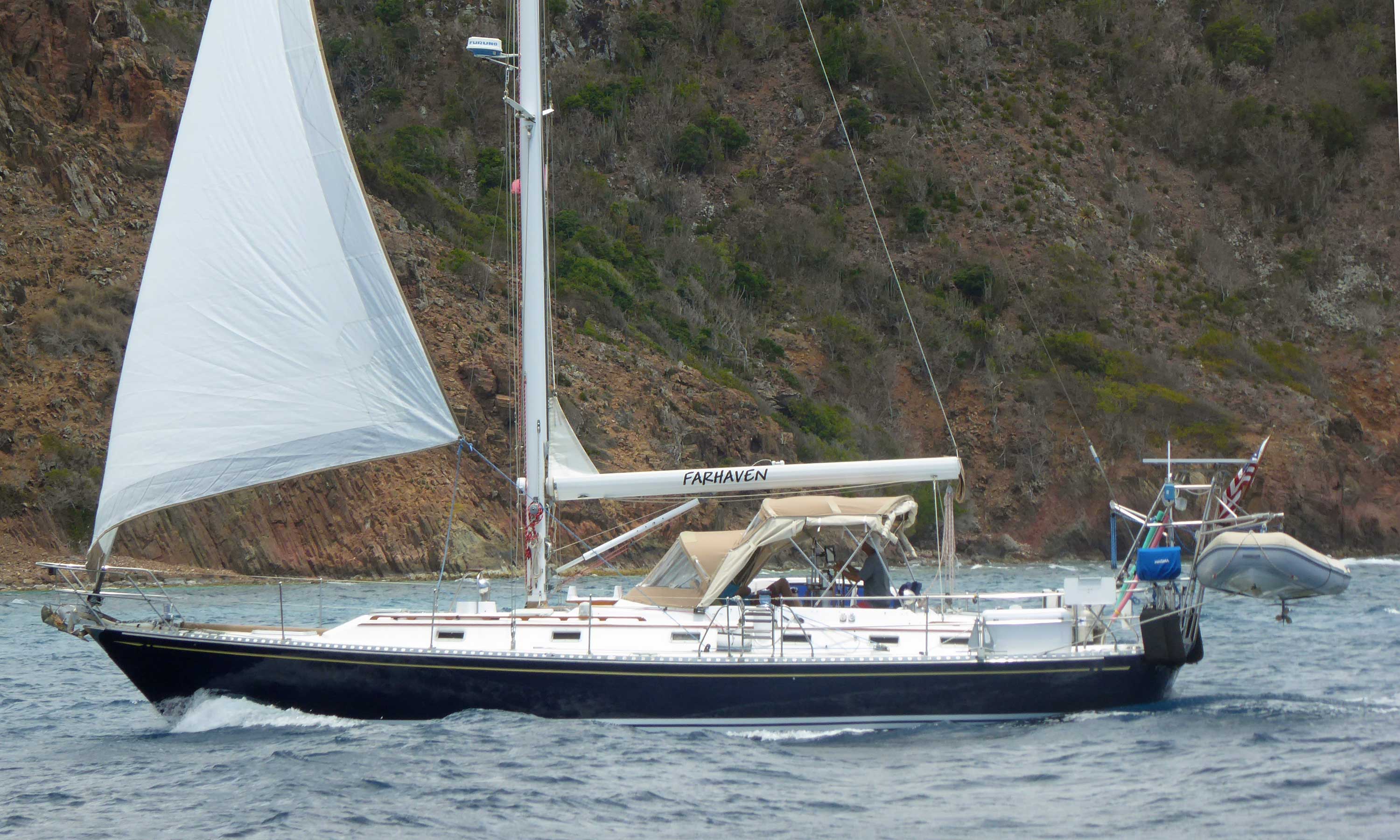 Hylas 44
Hylas 44A Fleet for the Far Seas: Evolving Models and Enduring Favorites
Hylas has consistently delivered a stream of acclaimed models over the years, many of which have achieved iconic status among blue water cruisers. Following the foundational Stevens 47, early Hylas-branded models included the German Frers-designed Hylas 42 and the Hylas 44. These, along with the Stevens 47, enjoyed popularity in charter fleets before Hylas became unaffiliated with such operations.
Among the most popular and successful models are the Hylas 46, Hylas 49, and especially the Hylas 54. The Hylas 49, a Tony Seifert modification of the original Sparkman & Stephens 47, is notably the only Sparkman & Stephens hull design still in production for Hylas. The Hylas 46, a German Frers design, is celebrated for its performance, spacious aft master cabin, and a "sugar-scoop" stern that offers excellent access and storage. The Hylas 54, another German Frers design, served as the flagship of the Hylas line for many years and remains highly sought after on the used market, valued for its ease of handling by short-handed crews and comfortable liveaboard capabilities.
Building on the success of the Hylas 54, the German Frers-designed Hylas 56 was introduced as a logical evolution. This model stretched the popular 54 hull, primarily from the keel aft, resulting in an increased waterline, a larger cockpit capable of seating six, and a beamier coachroof for an even more expansive main saloon. With options for in-mast furling and electric winches, the 56 was designed for easy shorthanded sailing despite its formidable size, reinforcing Hylas's commitment to comfortable, capable offshore passage-making. It quickly earned accolades, including "Best Premium Cruiser Over 55 feet" by Cruising World.
More contemporary offerings include the Hylas H48 (designed by Bill Dixon), H57, H60, H63, and H70. The H57, a Bill Dixon design, and the H60, penned by German Frers, have particularly garnered attention; the H57 clinched Cruising World's "Boat of the Year" in 2022, while the H60 received the same award for "Best Luxury Cruiser" in 2021. These newer models exemplify Hylas's ongoing evolution, incorporating modern design trends while remaining true to their core values of blue water capability and comfort. Hylas has also expanded into power yachts with models like the M44 and M49.
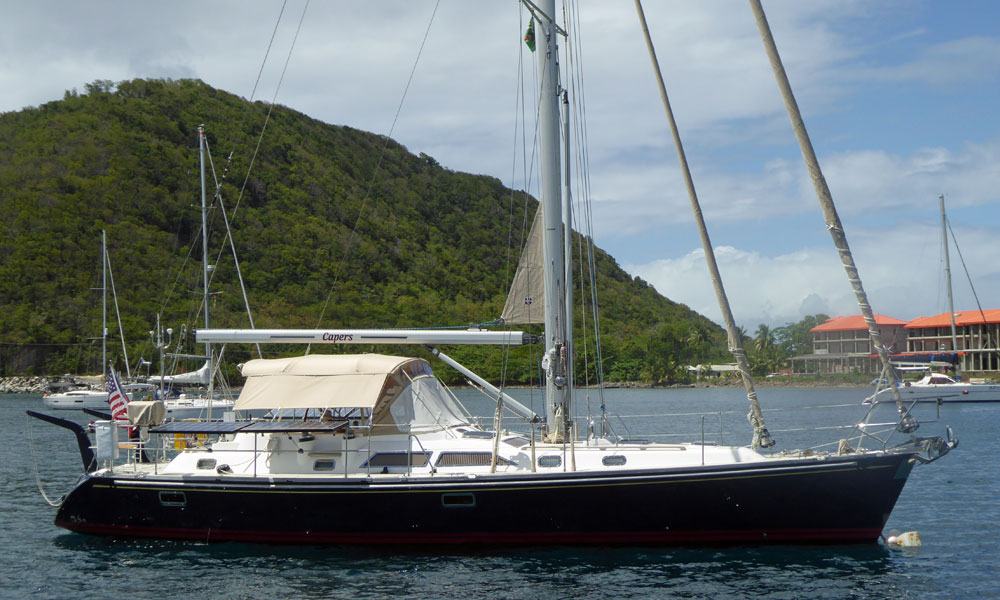 Hylas 46
Hylas 46Performance and Seaworthiness: Built for the Open Ocean
Hylas yachts are designed, first and foremost, for offshore passages and long-distance cruising. Their sailing characteristics are generally regarded as stable, stiff, and easily handled, even in challenging conditions. The fine entries and well-designed hull shapes contribute to a comfortable motion in a seaway, significantly reducing pounding. While the Hylas 49, with its full skeg, is often noted for its remarkable lack of pounding, some other models, though perhaps quicker downwind, can be "wet" boats when sailing fast to windward, taking water over the bow.
Their blue water capability is underscored by features such as robust construction, ample fuel and water tankage, accessible systems, and well-protected rudders (even partial skegs offer significant protection). The design philosophy prioritizes safety and self-sufficiency, instilling confidence in owners for extended voyages. Though not primarily racing yachts, their performance is certainly respectable for cruisers, with good sail area-to-displacement ratios allowing them to move along quite nicely. The Capsize Screening Formula (CSF) for models like the Hylas 46 often falls below 2.0, indicating a safer choice for ocean passages.
Interiors of Distinction: Luxury and Liveability
Step below decks on a Hylas, and you'll typically discover an interior that radiates traditional craftsmanship blended with practical elegance. The general aesthetic leans towards luxurious joinery, often featuring hand-finished teak, abundant storage, and meticulous attention to every detail. Hylas offers significant customization, empowering owners to influence everything from the choice of sole material to cabin configurations, ensuring each yacht truly feels like a bespoke home.
Layouts are generally designed for comfortable liveaboard cruising and entertaining. You'll often find spacious master cabins, particularly in center-cockpit designs like the Hylas 46 and 54, where the wide beam carried well aft creates a truly palatial aft stateroom. Galleys are typically well-equipped with double stainless steel sinks, ample counter space, and quality appliances.
Ergonomics and liveability are paramount, with well-thought-out access to mechanical systems and inviting seating areas. Newer models like the H57 and H60 embrace contemporary styling with features such as wrap-around windows and oversized portlights, bringing in more natural light and creating an almost "superyacht sense of space."
Market Position and Enduring Legacy
Hylas holds a strong position in the upper echelon of the blue water cruising yacht market. Their target demographic typically consists of experienced recreational sailors and sailboat owners who value customizability, robust build quality, and a comfortable liveaboard experience for extended cruising.
The brand enjoys a highly regarded reputation within the sailing community, known for producing yachts that are not only beautiful but also immensely capable and well-engineered. This reputation translates directly into strong resale values on the used market. While prices for used Hylas yachts can vary depending on age, condition, and model, they generally hold their value remarkably well, often seen as a sound investment by those seeking a long-term cruising platform.
The Hylas community is active and supportive. The Hylas Yacht Owners Association (HYOA) provides a forum for owners to share knowledge and experiences, while the Official Hylas Yacht Club fosters a global network through events and shared journeys. This vibrant community further enhances the ownership experience and reinforces the brand's enduring legacy. Hylas's lasting impact lies in its consistent delivery of semi-custom, high-quality, and highly capable blue water cruising yachts that continue to inspire and facilitate offshore adventures for sailors worldwide.
Navigating the Nuances: Challenges and Considerations
While Hylas yachts are widely praised, it's wise for prospective owners to consider a balanced perspective. Like any complex piece of machinery, individual boats can have their quirks or require specific attention. Some discussions among owners have touched upon particular issues, such as rudder failures on a few early Hylas 54s during the 2005 Caribbean 1500 rally, later attributed to prior groundings. This underscores the crucial importance of thorough pre-purchase surveys, especially for older models.
There have also been isolated instances of specific component failures, like boom issues or hydraulic system malfunctions, reported in some individual cases. While these don't necessarily indicate widespread systemic problems, they highlight the inherent complexity of yacht systems and the need for diligent maintenance, and if buying used, a comprehensive inspection. The excellent accessibility of Hylas systems generally makes maintenance and repairs more straightforward than on some other brands, but as with any yacht, ongoing care is absolutely crucial.
Another point of discussion, particularly for those eyeing older models, might be the "wet boat" characteristic when sailing hard to windward on certain designs. This simply means you should expect some spray and water over the bow in specific conditions, often a trade-off for other desirable sailing characteristics.
Summary
Hylas Yachts, built by Queen Long Marine in Taiwan, has established itself as a premier builder of high-quality, semi-custom blue water cruising sailboats. Founded in 1984 by Joseph Huang, the company's philosophy centers on robust construction, excellent design (primarily by Germán Frers and Bill Dixon), and significant owner customization.
Popular models like the Hylas 46, 49, and 54 have earned a strong reputation for seaworthiness, comfortable interiors, and dependable performance for offshore passages. Current production models like the H57 and H60 continue this legacy with modern advancements. Hylas yachts are known for their solid fiberglass hulls with aramid reinforcement, vacuum-bagged lamination, and meticulous attention to detail in their construction.
They hold their value well on the used market and are supported by an active owners' community. While individual yachts may experience component-specific issues, Hylas generally maintains a high standard of quality and durability, making them a top choice for serious recreational sailors.
Resources & References
- https://en.wikipedia.org/wiki/Hylas_Yachts
- https://hylasyachtcollection.com/about-the-hylas-yacht-collection/
- https://www.hylasyachts.com/sailing-yachts/h60/
- https://www.grabauinternational.com/wp-content/uploads/Hylas-63-brochure.pdf
- https://www.hylasyachts.com/sailing-yachts/h70/
- https://www.hylasyachts.com/sailing-yachts/h57/
- https://law.justia.com/cases/federal/appellate-courts/ca1/16-1917/16-1917-2017-09-22.html
- http://hylasyachts.org/index.php?topic=178.0
- https://www.hylasyachts.org/
- https://www.hylasyachts.club/benefits
- https://www.hylasyachts.com/about/
- https://salthouse.co.nz/hylas-1
- https://www.sailworldcruising.com/news/240907/Hylas-Yachts-H57-world-debut-at-US-boat-shows
Recent Articles
-
Optimising Your 12-Volt Boat Fridge for Offshore Sailing & Efficiency
Dec 01, 25 11:05 AM
Master your 12-Volt Boat Fridge system. A guide for experienced sailors covering mechanics, installation, troubleshooting, and advanced electrical efficiency on extended voyages. -
Jonmeri 40: Cruising Specs, Performance Ratios & Review
Nov 30, 25 09:08 AM
An in-depth, expert review of the Jonmeri 40 sailboat. Analyse design philosophy, D/L & CSF ratios, cruising suitability, and common ownership concerns for this Finnish-built, high-performance ocean c… -
Alajuela 48: Review, Specs, & Performance Ratios for Offshore Cruisers
Nov 29, 25 12:46 PM
Detailed analysis of the Alajuela 48 full-keel cruiser, including designer Robert Perry's philosophy, comprehensive specifications, key design ratios (SA/D, D/L, CSF), and suitability for experienced…
